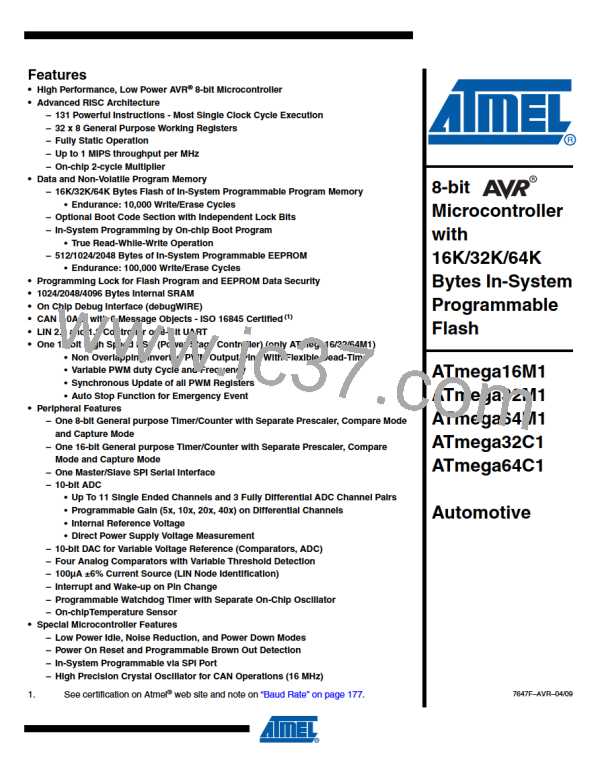The Oscillator can operate in three different modes, each optimized for a specific frequency
range. The operating mode is selected by the fuses CKSEL3..1 as shown in Table 5-3.
Table 5-3.
Crystal Oscillator Operating Modes
Recommended Range for Capacitors C1 and
C2 for Use with Crystals (pF)
CKSEL3..1
100(1)
101
Frequency Range (MHz)
0.4 - 0.9
–
0.9 - 3.0
12 - 22
12 - 22
12 - 22
110
3.0 - 8.0
111
8.0 -16.0
Notes: 1. This option should not be used with crystals, only with ceramic resonators.
The CKSEL0 Fuse together with the SUT1..0 Fuses select the start-up times as shown in Table
5-4.
Table 5-4.
Start-up Times for the Oscillator Clock Selection
Start-up Time from
Power-down and
Power-save
Additional Delay
from Reset
CKSEL0
SUT1..0
(VCC = 5.0V)
Recommended Usage
Ceramic resonator, fast
rising power
0
00
258 CK(1)
258 CK(1)
1K CK(2)
1K CK(2)
1K CK(2)
16K CK
16K CK
16K CK
14CK + 4.1 ms
14CK + 65 ms
14CK
Ceramic resonator, slowly
rising power
0
0
0
1
1
1
1
01
10
11
00
01
10
11
Ceramic resonator, BOD
enabled
Ceramic resonator, fast
rising power
14CK + 4.1 ms
14CK + 65 ms
14CK
Ceramic resonator, slowly
rising power
Crystal Oscillator, BOD
enabled
Crystal Oscillator, fast
rising power
14CK + 4.1 ms
14CK + 65 ms
Crystal Oscillator, slowly
rising power
Notes: 1. These options should only be used when not operating close to the maximum frequency of the
device, and only if frequency stability at start-up is not important for the application. These
options are not suitable for crystals.
2. These options are intended for use with ceramic resonators and will ensure frequency stability
at start-up. They can also be used with crystals when not operating close to the maximum fre-
quency of the device, and if frequency stability at start-up is not important for the application.
32
ATmega16/32/64/M1/C1
7647F–AVR–04/09

 ATMEL [ ATMEL ]
ATMEL [ ATMEL ]